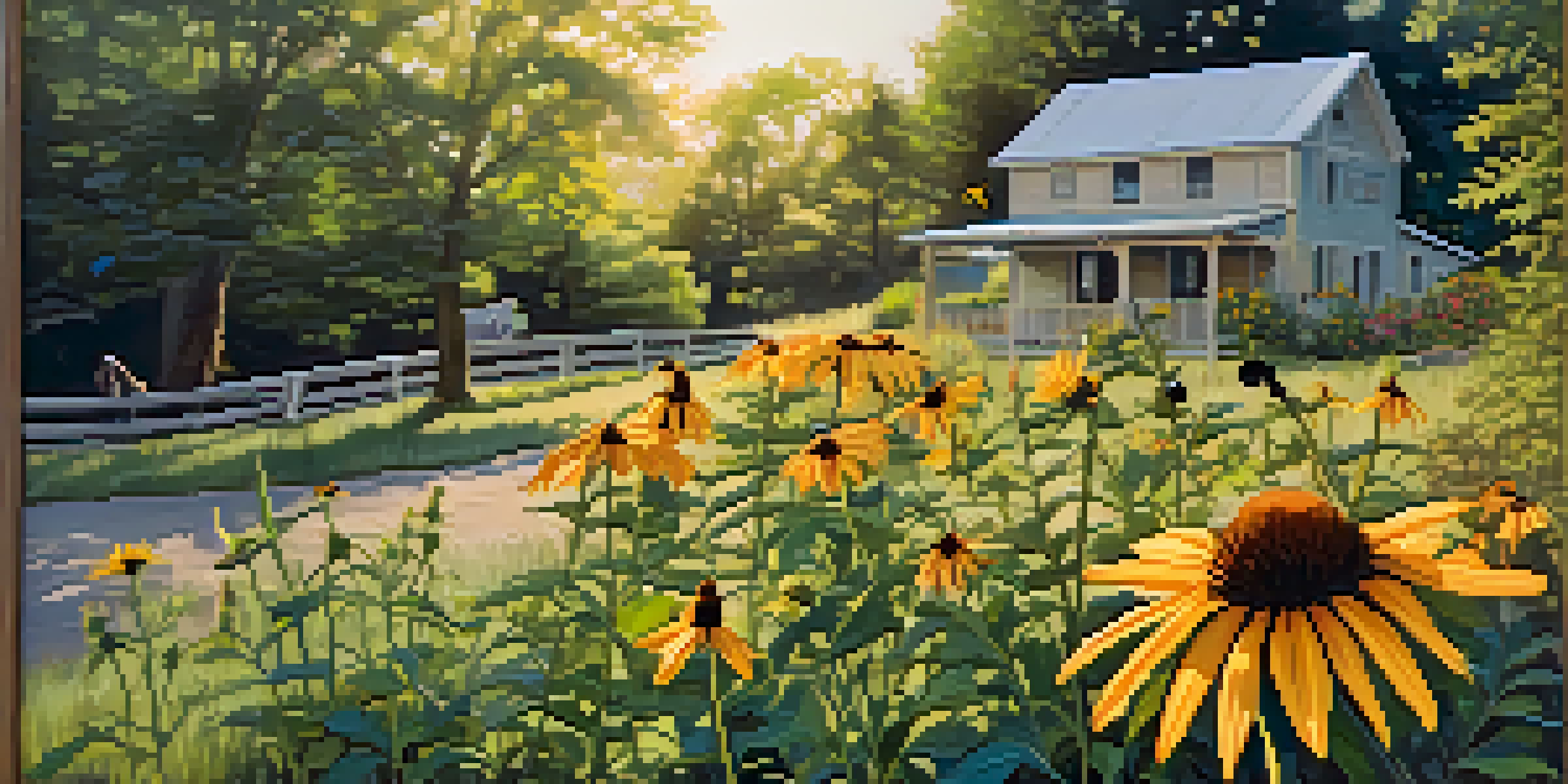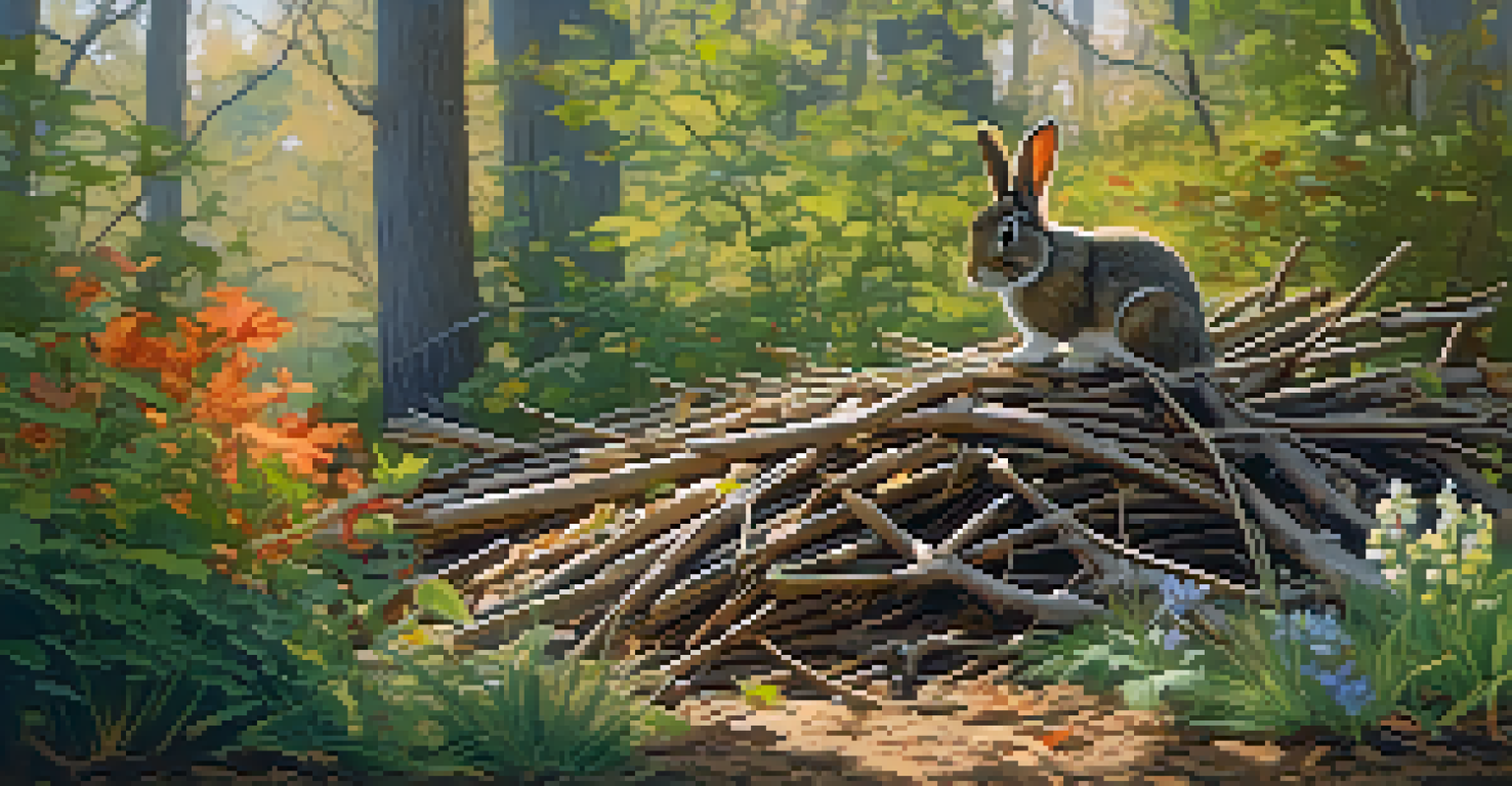Creating a Wildlife Habitat in Your Backyard Garden

Understanding the Importance of Wildlife Habitats
Creating a wildlife habitat in your backyard is not just about aesthetics; it plays a crucial role in supporting local ecosystems. By inviting wildlife into your garden, you contribute to biodiversity, which is essential for the health of our planet. This means providing food, shelter, and water for various species, which can help balance the local environment.
The greatness of a nation and its moral progress can be judged by the way its animals are treated.
Think of your garden as a tiny ecosystem where every plant and animal plays a part. For instance, birds can help control insect populations, while bees are vital for pollinating flowers and vegetables. By fostering these relationships, you’re not only making your garden more vibrant but also helping nature thrive right in your backyard.
As you embark on this journey, remember that every little effort counts. Even small changes, like adding a bird feeder or planting native flowers, can significantly impact the local wildlife and promote a flourishing habitat. So, let’s explore how you can start creating this sanctuary for wildlife today!
Choosing Native Plants for Your Garden
One of the most effective ways to attract wildlife to your garden is by choosing native plants. These plants are adapted to your local climate and soil, making them easier to grow and maintain. Plus, they provide the essential food and shelter that local wildlife needs, such as nectar for pollinators or seeds for birds.

For example, if you live in a region where coneflowers and black-eyed Susans grow naturally, consider incorporating them into your garden design. These plants not only add beauty but also attract butterflies and bees. By planting native species, you create a welcoming environment that supports local wildlife while reducing the need for chemical fertilizers and pesticides.
Create Biodiversity in Your Garden
By fostering local wildlife through food, shelter, and water, you enhance biodiversity and support a healthy ecosystem in your backyard.
Additionally, native plants often require less water, making them a sustainable choice. As you select your plants, think about the different layers of your garden—ground covers, shrubs, and trees—each of which can provide unique habitats for various animals. This diversity will enrich your garden and invite a wider range of wildlife.
Creating Water Sources for Wildlife
Water is a fundamental element for any wildlife habitat, and providing a source in your garden can make a significant difference. Whether it's a birdbath, a small pond, or even a simple dish of water, these features attract animals looking for hydration. It’s fascinating how even a small splash of water can draw in a variety of creatures, from birds to butterflies.
In every walk with nature, one receives far more than he seeks.
When designing your water feature, consider adding shallow areas where smaller animals can safely drink. If you opt for a pond, include plants like water lilies and cattails, which not only enhance the beauty but also provide shelter for frogs and insects. Remember to change the water regularly to keep it fresh and inviting.
Moreover, adding rocks or pebbles around the water source can create a safe landing spot for birds. By incorporating this element into your garden, you’ll likely find your backyard buzzing with life, as the presence of water is a magnet for wildlife of all kinds.
Building Shelter for Diverse Wildlife
Shelter is crucial for wildlife, providing them with a safe place to rest, breed, and escape predators. You can create various shelters using natural materials found in your garden, such as fallen branches, leaves, and stones. A simple brush pile can serve as a cozy home for birds, small mammals, and beneficial insects.
In addition to brush piles, consider adding birdhouses and bat boxes, which help support these species in their nesting efforts. When building these structures, tailor them to the specific needs of the wildlife in your area. For example, bluebird houses have specific dimensions that cater to their nesting habits.
Use Native Plants for Wildlife
Choosing native plants not only attracts local wildlife but also requires less maintenance and promotes sustainability.
Furthermore, leaving some areas of your garden a bit wild can be beneficial. Tall grasses, wildflowers, and untrimmed shrubs can provide excellent cover for various species. By creating these safe havens, you create a more inviting environment for wildlife to thrive.
Incorporating Food Sources for Wildlife
Beyond shelter and water, providing food sources is essential for attracting wildlife to your garden. This can be achieved through a combination of native plants, fruit-bearing trees, and dedicated feeding stations. For instance, planting berry bushes like elderberries or raspberries can attract birds and other wildlife during the fruiting season.
You can also set up feeders stocked with seeds to invite different bird species. A mix of sunflower seeds, peanuts, and nyjer seeds can attract everything from finches to woodpeckers. Remember to place feeders in safe locations, away from potential predators, to encourage more visitors.
Additionally, consider leaving some seeds and berries unharvested in your garden. These natural food sources can sustain wildlife during the colder months, making your garden a reliable resource for local animals. By thoughtfully incorporating food sources, you create a thriving ecosystem right outside your door.
Maintaining Your Wildlife Habitat
Creating a wildlife habitat is not a one-time task but rather a continuous effort. Regular maintenance is essential to ensure that your garden remains a welcoming space for wildlife. This includes activities like weeding, pruning, and monitoring water levels in any water features you’ve installed.
As seasons change, so will the needs of your wildlife visitors. For example, during the fall, consider leaving some leaf litter on the ground, as it provides shelter for insects and helps enrich the soil. In spring, you may want to prune back overgrown plants to let in more sunlight, promoting new growth.
Engage Community for Conservation
Involving your community in wildlife conservation efforts can amplify impact and encourage collective action towards creating wildlife-friendly spaces.
Additionally, it’s important to observe the wildlife that visits your garden. Take notes on what species you see and what times they appear. This not only enhances your connection with nature but also helps you adjust your garden to better meet the needs of your wildlife friends. With a little effort, your garden can continue to flourish as a habitat for years to come.
Engaging Your Community in Wildlife Conservation
Creating a wildlife habitat in your backyard can inspire others in your community to do the same. By sharing your experiences, you can encourage neighbors, friends, and family to participate in wildlife conservation efforts. Host a garden tour or a workshop to show how easy and rewarding it can be to create a welcoming environment for wildlife.
You can also connect with local environmental organizations or community gardens to share resources and ideas. Collaborating with others can lead to larger conservation projects that benefit even more wildlife. For instance, consider starting a neighborhood initiative to plant native gardens or create a local wildlife corridor.

Remember, every small effort counts, and collective action can bring about significant change. By fostering a sense of community around wildlife conservation, you not only enhance your garden but also contribute to a healthier environment for all. Together, you can create a network of wildlife-friendly spaces that make a positive impact.